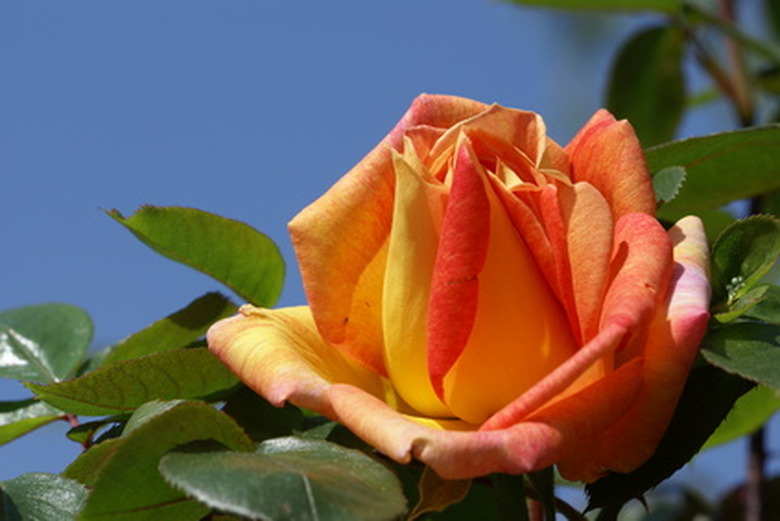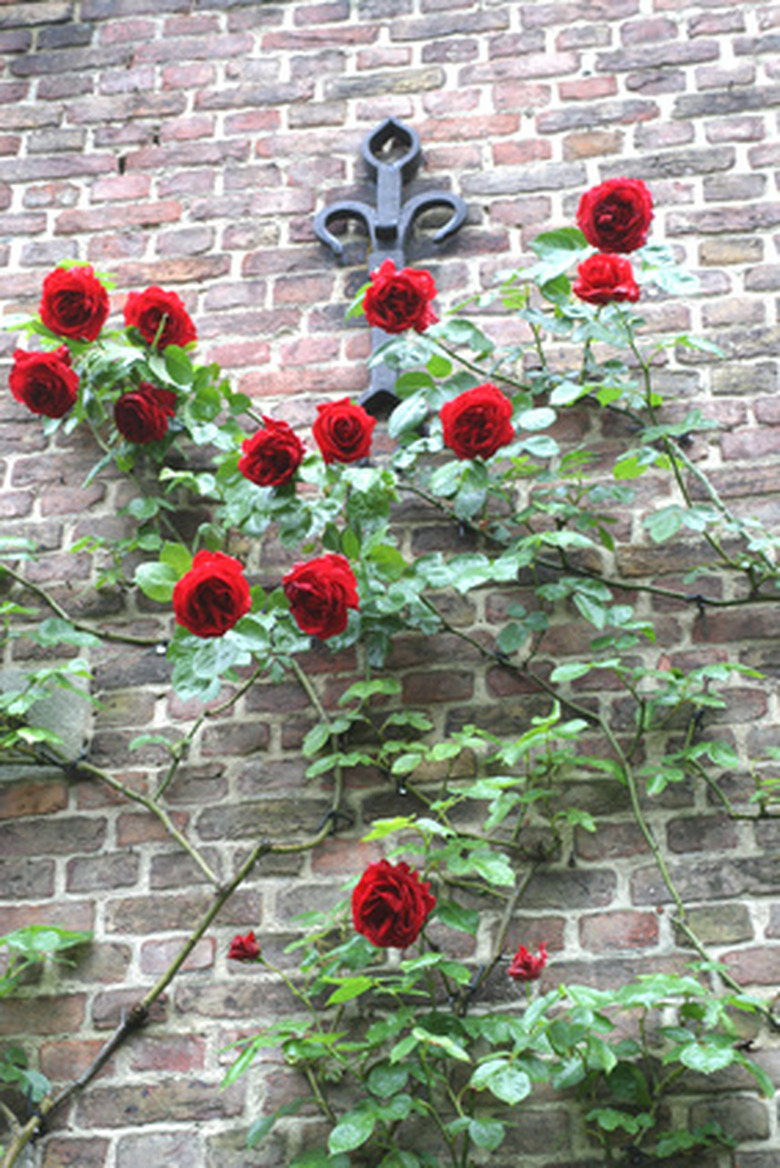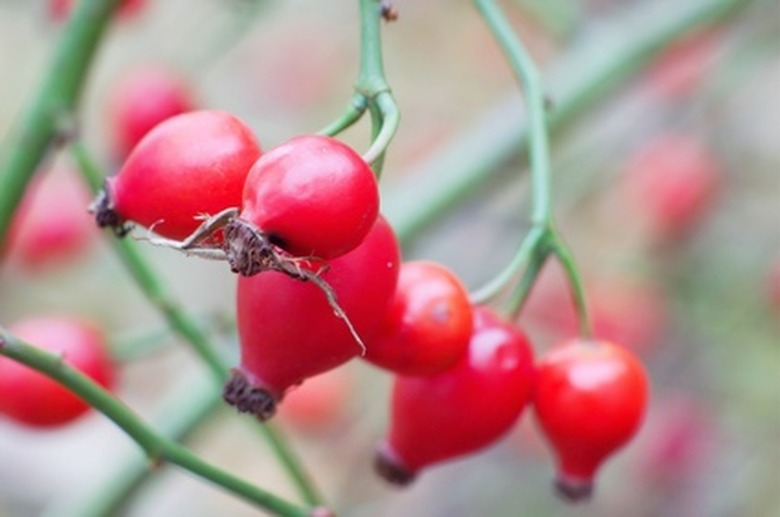Parts Of A Rose Bush
The parts of a rose bush differ between the different types of rose plants, but all roses consist of the same basic botanical structures. Whether they are miniature roses, hybrid teas or tall climbing roses, over 30,000 varieties of roses have been cataloged worldwide.
Rootstock
Rootstocks for roses are selected for particular characteristics, usually hardiness and stability. The rootstock is the base that the rest of the rose bush depends on for water and nutrients; a healthy rootstock means the rose can be a prolific grower.
Union Graft
The union graft is the main joint at the top of the rootstock where the type of the flowering rose is connected. The type of flowering rose grafted here determines which kind of flowers the bush will produce. Any canes that arise from below the union graft should be removed, since they will not produce the desired blossoms and will draw energy away from the rose bush.
- The parts of a rose bush differ between the different types of rose plants, but all roses consist of the same basic botanical structures.
- The rootstock is the base that the rest of the rose bush depends on for water and nutrients; a healthy rootstock means the rose can be a prolific grower.
Trunk
The main vertical part of a grafted rose bush is the trunk. The smaller branches, or canes, grow from the trunk. The trunk is the top part of the union graft. A rose bush that is three or four years old will develop a bark-like covering on the trunk.
Canes
Rose canes are the branches that bear the leaves, thorns and flowers. They grow from the trunk, and may be branched themselves. Canes are usually green, but they may be bronze, reddish or woody, depending on the rose variety. It is the canes that are pruned to keep the rose bush productive and to shape the bush. Leaf and flower buds grow from the canes, sometimes developing as side shoots.
- The main vertical part of a grafted rose bush is the trunk.
- They grow from the trunk, and may be branched themselves.
Climbing rose bushes have canes that reach up to 30 feet long, with numerous stems and flowers along the entire length. The canes of hybrid tea roses are pruned to 3 to 4 feet to control the development of buds and foliage so larger flowers will develop. Shrub roses have multi-branching canes which are more densely spaced than those of other rose bush types.
Flower, Hips
The rose flowers are borne on the tips of the canes, sometimes in clusters and sometimes as a single flower. Pollinated rose flowers form seed pods called "hips," which develop after the flower fades.
Tree Roses
Tree roses have an additional graft. They consist of rootstock, a union joint with a grafted tall trunk, and another bud graft made at the head of the rose tree which will develop into flower producing canes. Side shoots and suckers must be kept pinched off the rootstock and trunk to maintain the tree shape and to keep the flowering grafts productive.
- Climbing rose bushes have canes that reach up to 30 feet long, with numerous stems and flowers along the entire length.
- The canes of hybrid tea roses are pruned to 3 to 4 feet to control the development of buds and foliage so larger flowers will develop.


